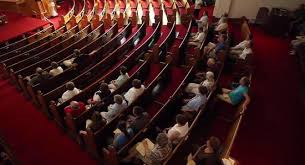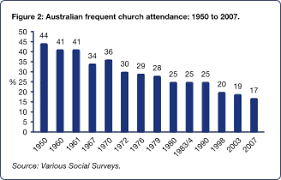The Decline of the Church. . and What it means for Death Care
 The lead article in yesterday’s Sunday Minneapolis Star Tribune was entitled, “As Churches Close, a Way of Life Fades”. It is an excellent article on the path our nation, and by the graph I’ve put with this article, other nations are heading with church membership. You can read the article here.
The lead article in yesterday’s Sunday Minneapolis Star Tribune was entitled, “As Churches Close, a Way of Life Fades”. It is an excellent article on the path our nation, and by the graph I’ve put with this article, other nations are heading with church membership. You can read the article here.
Funeral Director Daily take: While the article has no funeral or death care related topics to it, as I was reading it I kept on wondering “What does this mean to funeral service?”
For the record, the base line of the article was the statistics of what is happening with church membership and attendance of churches in America and what that is causing in the churches themselves. Here are the nationwide statistics, since the year 2000, that the article puts out on certain denominations in America:
- Evangelical Church in America (ELCA): -30.5% membership
- United Methodist Church: -16.7%
- Presbyterian Church: -41.3%
- Roman Catholic Church: +14.4%
- Median Age for all Protestant Church is 50 years
- Median Age for the Roman Catholic Church is 49 years
You can see – that with the exception of the Roman Catholic Church- membership is declining rapidly. And, even though the Roman Catholic Church has grown in membership – believed to be because of predominantly Catholic immigrants from Central America – the article points out that Catholics have about 2000 less parishes than they did in 2000 America. Furthermore, the pace of membership loss continues to accelerate.
So, what does this mean for the death care industry? Let me first say that when I started in funeral service – helping in the summers when my dad died in 1977 and later as a full time funeral director in 1980 – the church somebody was a member at virtually dictated the funeral service that they would have. Not only did the church of membership dictate “How” the funeral service would be conducted, many times the history or the leadership (Clergy) was a defining force in the merchandise that would be selected. I can drive you around our county and show you different churches and their philosophy on monuments in their cemeteries — some cemeteries got started with small ground plaques for the deceased and some churches got started with large monuments which then became the norm for all families.

Church attendance in Australia
Some clergy members had the attitude that “nothing more can be done for the deceased” so don’t spend much on the funeral whereas other clergy believed and advocated to their parishioners that a “nice” casket and vault were proper ways to show respect and love. Church membership “did” have an influence on funeral services — one way or another.
Regardless of merchandise, the one thing church membership did drive was “ceremony”. The ceremony was important to the concept of looking forward to the Christian ideology of eternal life. And, on a business front, ceremony brought in revenue to the funeral home.
While you might find this comparison somewhat odd, I think back to the 1970’s when McDonald’s was gaining market share by having “standard” burgers, fries, shakes, and soda at a low price and available in minutes. Competitor Burger King fought that concept by introducing “Have it Your Way”. Their thought was we might take a little longer, but we will make the burger the way that you want it.
I find a parallel in the Burger King concept and the way the consumer public chooses death care services outside of the church membership realm. . . it is a “Have it your way” philosophy. I find that good for the consumer, but not necessarily good for the death care provider. If there is no tradition or history that advocates for ceremony, many families will go without it. It is my opinion that the drop in organized religion will hasten this concept.
From my perspective, a nation that loses its sense of tradition, ceremony, and history loses who they are. When this happens new norms appear and we move forward with them. We are seeing that in death care — direct cremation, green funerals, no services, and on and on. It’s a challenge for funeral businesses to see where they can continue to profit from these trends and it is a challenge for a nation to see how they prosper when its tradition, ceremony, and history are seen from a different perspective.
[wpforms id=”436″ title=”true” description=”true”]



















